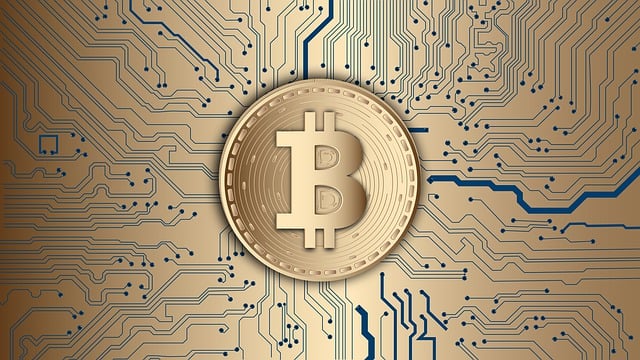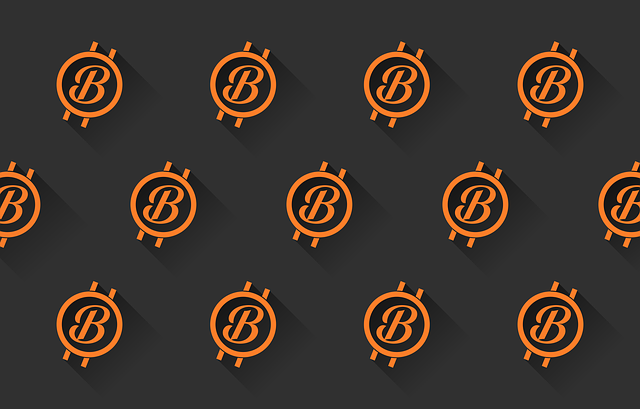Decentralized Finance (DeFi), powered by blockchain technology, is transforming traditional banking by offering a democratic, transparent, and secure alternative. Through peer-to-peer networks and smart contracts, DeFi enables users to manage their finances globally without intermediaries, fostering inclusivity, efficiency, and accessibility in financial tools. While facing challenges like regulatory uncertainty and security risks, DeFi's potential impact on borrowing, lending, trading, and interest earnings could revolutionize global finance, creating an innovative, inclusive, and efficient financial landscape.
In the rapidly evolving digital landscape, Decentralized Finance (DeFi) is emerging as a game-changer, promising to revolutionize traditional financial services. This article explores the fundamentals of DeFi, its transformative potential, and the subsequent effects on established banking systems. We delve into the promises and challenges, offering insights into the future outlook for this disruptive force, highlighting its potential impact on the broader financial sector and users worldwide.
- Understanding Decentralized Finance (DeFi): Unlocking the Basics
- The Promise of DeFi: Revolutionizing Financial Services
- Potential Impacts on Traditional Banking and Users
- Navigating the Challenges and Future Outlook for DeFi
Understanding Decentralized Finance (DeFi): Unlocking the Basics

Decentralized Finance (DeFi) represents a paradigm shift in the financial landscape, offering an alternative to traditional centralized banking systems. At its core, DeFi aims to democratize access to various financial services by leveraging blockchain technology. This innovative approach allows users to interact directly with each other without the need for intermediaries like banks, fostering transparency and security through cryptographic principles.
The potential impact of DeFi is profound, promising greater inclusivity and efficiency in managing finances. It enables individuals to borrow, lend, trade, and earn interest on their assets with unprecedented ease and speed. Moreover, DeFi platforms are borderless, allowing users worldwide access to financial tools traditionally restricted by geographical boundaries. This accessibility has the power to revolutionize how we perceive and interact with money, creating a more inclusive and robust global financial system.
The Promise of DeFi: Revolutionizing Financial Services

Decentralized finance, or DeFi, represents a promising movement in the world of financial services with the potential to revolutionize how we interact with money. By leveraging blockchain technology and smart contracts, DeFi offers a transparent, accessible, and democratized approach to various financial activities. The traditional centralized banking system is replaced with a peer-to-peer network, eliminating intermediaries and empowering individuals to have more control over their assets.
The potential impact of DeFi is vast. It enables users to borrow, lend, trade, and earn interest on their cryptocurrency holdings without the need for a bank. This opens up opportunities for financial inclusion, especially in regions with limited access to traditional banking services. Moreover, DeFi’s decentralized nature ensures higher security, lower fees, and faster transactions compared to conventional methods. With its innovative solutions, DeFi is set to reshape the global financial landscape, fostering a more inclusive, efficient, and secure economic system.
Potential Impacts on Traditional Banking and Users

The emergence of Decentralized Finance (DeFi) has the potential to significantly reshape traditional banking systems and user experiences. DeFi platforms, operating on blockchain technology, offer a decentralized alternative to centralized financial institutions, promising greater accessibility, transparency, and control to users. This shift could disrupt established banking models, as customers may no longer rely solely on traditional banks for services like lending, borrowing, and savings.
For traditional banks, the DeFi revolution presents both challenges and opportunities. While it encourages innovation and fosters a more inclusive financial ecosystem, it also threatens their market dominance by introducing peer-to-peer transactions without intermediaries. Users, meanwhile, stand to gain from increased financial autonomy, lower fees, and enhanced security through blockchain’s cryptographic features. However, they must also navigate the complexities of decentralized systems and ensure their digital assets’ safety in a largely unregulated space.
Navigating the Challenges and Future Outlook for DeFi

Navigating the Challenges and Future Outlook for DeFi
Despite its promise, decentralized finance (DeFi) faces significant challenges. Regulatory uncertainty, security vulnerabilities, and user experience issues pose threats to its growth. However, these challenges also present opportunities for innovation. As the DeFi space matures, advancements in smart contract security, regulatory clarity, and intuitive interfaces can help address these concerns. By leveraging cutting-edge technologies and fostering collaboration among developers, regulators, and users, DeFi has the potential to revolutionize traditional financial systems, offering greater accessibility, transparency, and control to individuals worldwide.
Looking ahead, the future of DeFi appears promising, with a growing ecosystem of applications and increasing adoption rates. As more investors and mainstream institutions embrace DeFi, its potential impact on global finance could be profound. With continued development and refinement, decentralized finance may eventually reshape how we interact with money, creating a more inclusive, efficient, and secure financial landscape.
Decentralized finance (DeFi) has the potential to significantly reshape traditional banking, offering innovative financial services through blockchain technology. While it presents challenges, the promise of DeFi is undeniable, with its ability to enhance accessibility, transparency, and efficiency in financial matters. As this emerging field continues to evolve, understanding and embracing its potential impacts will be crucial for both users and the broader banking sector to navigate this exciting new landscape.
